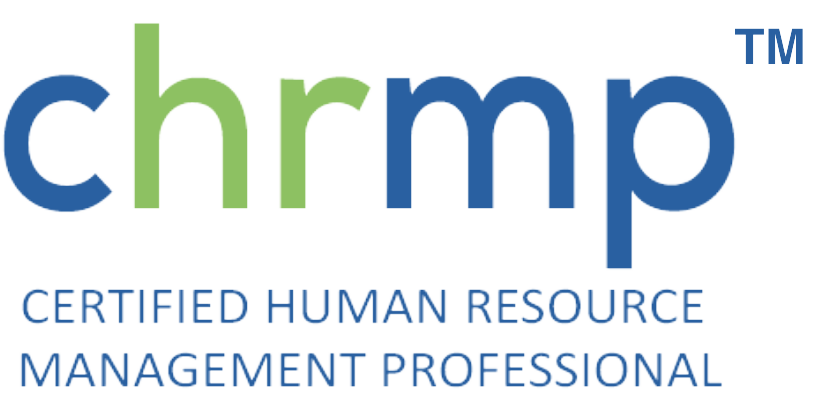A job requisition is a formal request for a new or additional role within a company. It is the first step in the recruitment process and is used to outline the requirements for a new hire.
For an HR professional or a hiring manager, it’s essential to understand the basics of job requisitions and how they can help streamline the recruitment process.
In this blog, we will delve into the definition of a job requisition, its purpose, and tips for creating an effective one.
Want to learn more about job requisitions and their benefits for your company? Read on to find out!
What is a job requisition?
A job requisition is the first step in a company’s hiring process and is a formal request to create or add a new position.
It enlists a new hire’s prerequisites and contains all the relevant information regarding the responsibilities, duties and qualifications required for the new position.
Job requisitions are usually written by HR professionals or hiring managers and are used to commence the hiring process and attract the top-qualified candidates. It lays out a clear outline and provides an understanding of the new role and what it entails, thus ensuring a faster, more straightforward hiring process which aligns appropriately with all applicable laws and regulations.
Why is it important?
A job requisition is essential because it is a base for all new hiring processes. It outlines all the requirements of a new position, making it possible to ensure that the recruitment process is highly effective, efficient and in compliance with the relevant laws and regulations.
Job requisitions also provide a clear understanding of the new role and its requirements, making it easier to attract suitable candidates for the role. Companies can reach a wider audience through a well-written job requisition, attract top talent for the role and ensure successful recruitment.
In addition, job requisitions also contribute significantly to standardising the hiring process, both horizontally and vertically throughout the company, thus ensuring that all newly hired candidates are adequately qualified, both professionally and academically, while ensuring that they are fully aware of their duties and expectations.
Job requisitions also help enhance employee productivity, employee satisfaction and retention while lowering absenteeism rates and building a more positive work culture by ensuring the perfect candidates get recruited to the position.
Benefits of a job requisition
Job requisitions can have several benefits for your organisation as they play a vital role in the hiring procedure by clearly understanding the requirements of a new position and ensuring the right candidate gets hired for the post. This way, companies can improve their recruitment processes to build a better workforce and ensure the company’s success.
That being said, here are five benefits that a job requisition can provide to your company:
1. Streamlined recruitment process
Job requisitions can help standardise the hiring/recruitment process in your company while ensuring that all the newly hired candidates understand the roles and responsibilities of their positions clearly
2. Helps attract the suitable candidates for the position
A well-written job requisition can play a crucial role in attracting top talent for your company by clearly laying out the requirements for the new position, thus ensuring that the recruitment process is more efficient and effective and, at the same time, cuts costs and is less time-consuming.
3. Improves compliance
A well-written job requisition helps ensure that the recruitment process complies with relevant laws ,by-laws and government regulations, thereby reducing the risk of legal issues and non-compliance.
4. Increases productivity in the organisation
Hiring the right candidate well matched to the requirements of the job can lead to improved productivity, less absenteeism, reduced employee turnover ,better employee engagement, retention and satisfaction, resulting in a more positive company culture.
5. Enhances employee satisfaction
A well-planned and executed recruitment process can increase employee satisfaction and lead to higher retention rates due to the hiring of an aptly matched candidate to the requirements of the job .
In conclusion, a job requisition is valuable for organisations looking to improve their recruitment process and attract the suitable candidates for their open roles. By streamlining the recruitment process, drawing the eligible candidates, improving compliance, enhancing productivity, and increasing employee satisfaction. Requisitions can have a positive impact on the overall success of an organisation. When the right candidate gets hired for the right slot, every piece falls in its proper place.
Key elements of a job requisition
A job requisition is a formal document that outlines the details and requirements of a job opening within an organization. It serves as a foundation for the recruitment and selection process. Here are key elements typically included in a job requisition:
1. Job Title and Department
Clearly state the job title, which accurately reflects the position’s responsibilities and level within the organizational hierarchy. Specify the department or team to which the position will belong.
2. Job Description
Provide a comprehensive overview of the job’s duties, responsibilities, and objectives. This section outlines the core tasks and functions expected from the employee in the role. It helps prospective candidates understand the nature of the job and assess their fit.
3. Qualifications and Requirements
List the qualifications, skills, and experience necessary to perform the job successfully. This includes both essential and preferred qualifications, such as educational background, certifications, technical skills, and relevant work experience. Specify any specific requirements, such as language proficiency, software proficiency, or industry experience.
4. Reporting Structure
Indicate the reporting relationships associated with the position. This includes the position’s supervisor, as well as any positions that will report directly or indirectly to the role.
5. Key Responsibilities
Provide a detailed breakdown of the primary tasks, responsibilities, and deliverables expected from the employee in the role. This section helps candidates understand the main areas of focus and the scope of their responsibilities.
6. Compensation and Benefits
Outline the salary range or compensation package associated with the position. Specify any additional benefits, such as healthcare, retirement plans, or vacation allowances.
7. Location and Travel Requirements
Specify the location of the job and any travel expectations associated with the role. If the position requires frequent travel or relocation, it should be clearly communicated.
8. Application Process
Provide instructions on how candidates can apply for the position, including the submission of resumes, cover letters, and any other relevant documents. Mention any application deadlines or specific requirements, such as a portfolio or work samples.
9. Company Overview
Briefly describe the organization’s background, mission, and values. This provides potential candidates with insight into the company’s culture and helps them assess their alignment with the organization.
10. Date and Approvals
Include the date of the job requisition and any necessary approval signatures or information, such as the hiring manager’s name, HR representative, or other relevant stakeholders.
The key elements of a job requisition should be clear, concise, and accurately represent the requirements and expectations of the position. A well-crafted job requisition helps attract qualified candidates and sets the foundation for a successful recruitment process.
Job requisition vs. job description vs. job posting
People often use the terms’ job requisition’, ‘job description’ and ‘job posting’ interchangeably, but there are some critical differences between the three times. They are all essential components of a company’s recruitment process but serve different purposes.
A job requisition is a formal request for a new or additional role within an organisation. It outlines the requirements for a new hire, including the job duties, responsibilities, academic and professional qualifications needed for the position and is typically created by the HR department or a hiring manager and is used to initiate the recruitment process.
A job description too includes the duties, roles and responsibilities for a position, but it is a more detailed document that provides a comprehensive overview of the responsibilities, duties, and qualifications required for an existing role. It is used to provide a clear understanding of the role and its requirements, both to internal stakeholders and potential candidates.
A job posting is an advertisement for a specific job opening in an organisation. It is typically published on job boards, company websites, other online platforms , and offline platforms like newspapers and magazines to attract potential candidates. A job posting includes a brief description of the role, its requirements, and instructions for applying.
In short, a job requisition serves as the foundation for the recruitment process, a job description provides a detailed overview of the role, and a job posting is the advertisement used to attract the suitable candidates.
How do you write a job requisition? 9 Tips
Listed below are some tips for writing a great job requisition:
1. Begin with the title for the position
Begin writing with the title for the new role, and clearly define the role and its purpose, and ensure that the job title accurately reflects the responsibilities and duties of the role.
2. Lay out the basic outline of duties and responsibilities
Clearly define the primary responsibilities and duties of the role, including any specific tasks that the new hire will be responsible for.
3. Specify the qualifications required for the role
Education, skills, and previous experience required for the role, including any certifications, licenses, or technical skills, should be specified.
4. Identify the department and reporting structure
The department and the reporting structure for the role should be clearly defined, including the immediate supervisor or subordinates.
5. Include information about the company culture
Provide a brief overview of the company culture and the values that drive the organisation.
6. Specify the location and working hours
Clearly define the location of the role and the expected working hours, including any flexible work arrangements, whether working from home or the office .
7. Provide compensation information
Provide an overview of the compensation package offered by your company, including salary, benefits, and any other perks. Ensure a competitive compensation package to attract top talent for the role.
8. Be clear and concise
While writing, ensure that it is clear, concise, and easy to understand, using simple language and avoiding unnecessary technical jargon.
9. Get input from stakeholders
Encourage input from key stakeholders, including HR, hiring managers, and existing employees, to ensure that the job requisition accurately reflects the requirements and expectations of the role.
By following the tips above, you can create a well-written requisition for your company that accurately reflects the requirements of the new role and attracts the right candidates to fill out the slot and is the best fit for the company. A great job requisition can serve as the foundation for a successful and efficient recruitment process which is both time and cost-effective.
Job requisition template
Here is a basic outline sample for a job requisition:
Title of the new position: (Insert title)
Department in which the role is required: (Insert name of department)
Reporting Structure: (Insert Reporting Structure Information)
Location: (Insert Location Information; work from home, onsite, etc.)
Working Hours: (Insert information on working hours)
Duties and expectations for the new role::
- (Insert Responsibility #1)
- (Insert Responsibility #2)
- (Insert Responsibility #3)
Qualifications required from candidates for the position:
- (Insert Qualification #1)
- (Insert Qualification #2)
- (Insert Qualification #3)
Compensation and benefits offered by your company:
(Insert Compensation Information)
Information regarding the work culture in your organisation:
(Insert Company Culture Information)
Notes:
(Insert Any Additional Information or Notes)
By following a template like this, you can create a comprehensive job requisition that accurately reflects the requirements and expectations of the role while serving as a guide for the recruitment process.
FAQ’s
What is a job requisition?
A job requisition is a formal request for a new or additional role within a company. It outlines the requirements for a new hire and includes the job duties, responsibilities, and qualifications needed for the role.
Who is responsible for creating a job requisition?
A job requisition is usually created by the HR department or a hiring manager and is used to initiate the recruitment process.
What information should be included in a job requisition?
A job requisition should include the job title, department, reporting structure, location, working hours, responsibilities and duties, qualifications, compensation, and company culture information.
What is the purpose of a job requisition?
A job requisition aims to provide a clear understanding of the requirements and expectations of a role and initiate the recruitment process. It serves as a foundation for attracting and selecting the right candidates for the role.
How often does a job requisition need to be updated?
A job requisition should be updated regularly to reflect any changes in the role, such as changes in responsibilities, qualifications, or compensation. Updating the job requisition ensures that it remains accurate and relevant and helps to attract the right candidates for the role.
Conclusion
In conclusion, a job requisition is a crucial component of the recruitment process. It outlines the requirements and expectations of a role and serves as a guide for attracting and selecting the right candidates.
A well-written job requisition should be clear, concise, and easy to understand and should include all relevant information about the role, such as the job title, responsibilities, qualifications, compensation, and company culture. By following a job requisition template and updating it regularly, organisations can ensure that their recruitment process is efficient, effective, and aligned with their overall talent management strategy.





